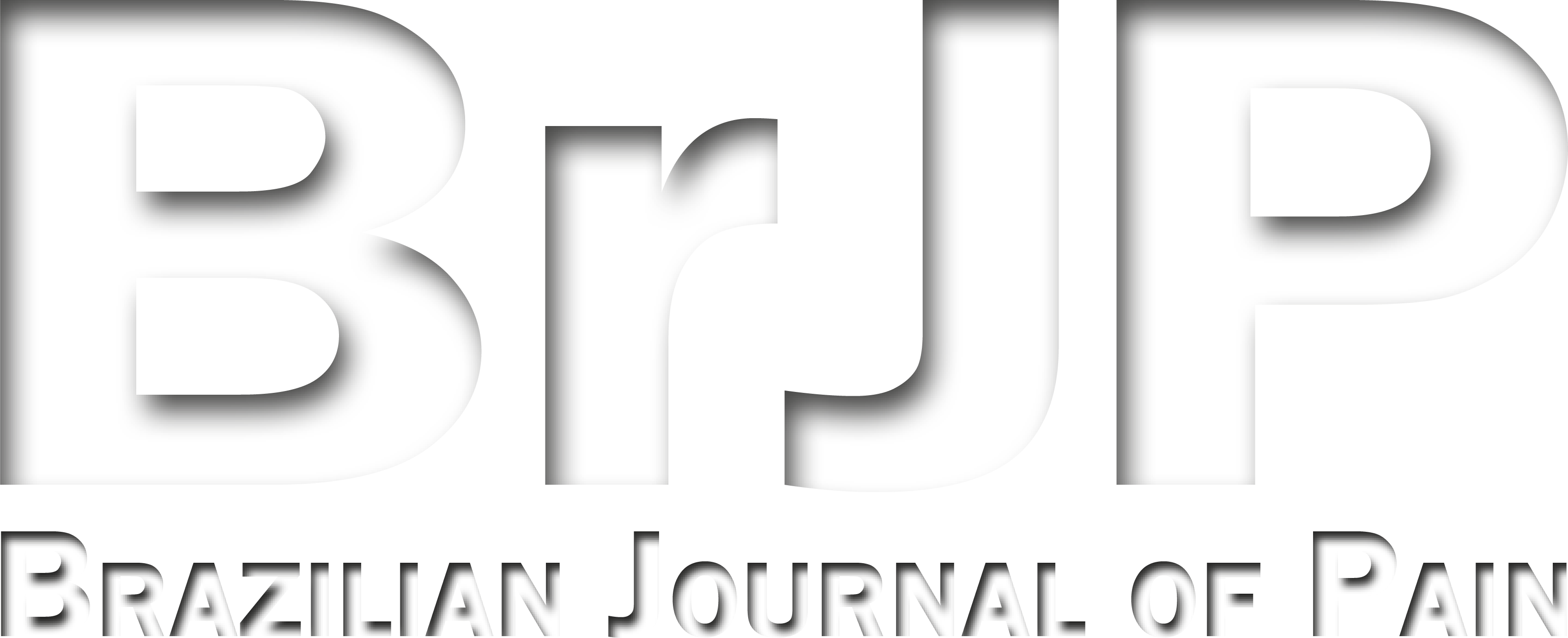Self-care, education, and awareness of the patient with temporomandibular disorder: a systematic review
Giovanna Pimentel; Daniel Bonotto; Priscila Brenner Hilgenberg-Sydney
Abstract
Keywords
References
Durham J, Al-Baghdadi M, Baad-Hansen L, Breckons M, Goulet JP, Lobbezoo F. Self-management programmes in temporomandibular disorders: results from an international Delphi process. J Oral Rehabil. 2016;43(12):929-36.
Laat A De, Stappaerts K, Papy S. Counseling and physical therapy as treatment for myofascial pain of the masticatory system. J Orofac Pain. 2003;17(1):42-9.
Türp JC, Jokstad A, Motschall E, Schindler HJ, Windecker-Gétaz I, Ettlin DA. Is there a superiority of multimodal as opposed to simple therapy in patients with temporomandibular disorders? A qualitative systematic review of the literature. Clin Oral Implants Res. 2007;18(^sSuppl 3):138-50.
Martins AP, Aquino LM, Meloto CB, Barbosa CM. Counseling and oral splint for conservative treatment of temporomandibular dysfunction: preliminary study. Rev Odontol UNESP. 2016;45(4):207-13.
Heiskanen T, Roine RP, Kalso E. Multidisciplinary pain treatment - which patients do benefit?. Scand J Pain. 2012;3(4):201-7.
Miles CL, Pincus T, Carnes D, Homer KE, Taylor SJ, Bremner SA, Rahman A. Can we identify how programmes aimed at promoting self-management in musculoskeletal pain work and who benefits? A systematic review of sub-group analysis within RCTs. Eur J Pain. 2011;15(8):775.
Kress HG, Aldington D, Alon E, Coaccioli S, Collett B, Coluzzi F. A holistic approach to chronic pain management that involves all stakeholders: change is needed. Curr Med Res Opin. 2015;31(9):1743-54.
Schiffman EL, Velly AM, Look JO, Hodges JS, Swift JQ, Decker KL. Effects of four treatment strategies for temporomandibular joint closed lock. Int J Oral Maxillofac Surg. 2014;43(2):217-26.
Martins-Júnior RL, Palma AJ, Marquardt EJ, Gondin TM, Kerber Fde C. Temporomandibular disorders: a report of 124 patients. J Contemp Dent Pract. 2010;11(5):71-8.
Conti PC, Corrêa AS, Lauris JR, Stuginski-Barbosa J. Management of painful temporomandibular joint clicking with different intraoral devices and counseling: a controlled study. J Appl Oral Sci. 2015;23(5):529-35.
Peters S, Goldthorpe J, McElroy C, King E, Javidi H, Tickle M. Managing chronic orofacial pain: A qualitative study of patients', doctors', and dentists' experiences. Br J Health Psychol. 2015;20(4):777-91.
Mukherjee S, Sen S, Sinha S. Orofacial pain: a critical appraisal in management. Indian J Pain. 2015;29(3):127-34.
Giro G, Policastro VB, Scavassin PM, Leite AR, Marin DO Mendoza, Gonçalves DA. Mandibular kinesiographic pattern of women with chronic TMD after management with educational and self-care therapies: a double-blind, randomized clinical trial. J Prosthet Dent. 2016;116(5):749-55.
Ommerborn MA, Taghavi J, Singh P, Handschel J, Depprich RA, Raab WH. Therapies most frequently used for the management of bruxism by a sample of German dentists. J Prosthet Dent. 2011;105(3):194-202.
Michelotti A, Iodice G, Vollaro S, Steenks MH, Farella M. Evaluation of the short-term effectiveness of education versus an occlusal splint for the treatment of myofascial pain of the jaw muscles. J Am Dent Assoc. 2012;143(1):47-53.
Conti PC, Alencar EN de, Corrêa AS da Mota, Lauris JR, Porporatti AL, Costa YM. Behavioural changes and occlusal splints are effective in the management of masticatory myofascial pain: a short-term evaluation. J Oral Rehabil. 2012;39(10):754-60.
Craane B, Dijkstra PU, Stappaerts K, Laat A De. One-year evaluation of the effect of physical therapy for masticatory muscle pain: a randomized controlled trial. Eur J Pain. 2012;16(5):737-47.
Bouchard C, Goulet JP, El-Ouazzani M, Turgeon AF. Temporomandibular lavage versus nonsurgical treatments for temporomandibular disorders: a systematic review and meta-analysis. J Oral Maxillofac Surg. 2017;75(7):1352-62.
Campi LB, Camparis CM, Jordani PC, Gonçalves DA. Influence of biopsychosocial approaches and self-care to control chronic pain and temporomandibular disorders. Rev Dor. 2013;14(3):219-22.
Freitas RF de, Ferreira MÂ, Barbosa GA, Calderon PS. Counselling and self-management therapies for temporomandibular disorders: a systematic review. J Oral Rehabil. 2013;40(11):864-74.
Miernik AM, Wieckiewicz W. The basic conservative treatment of temporomandibular joint anterior disc displacement without reduction-review. Adv Clin Exp Med. 2015;24(4):731-5.
Vernooij RW, Willson M, Gagliardi AR. Characterizing patient-oriented tools that could be packaged with guidelines to promote self-management and guideline adoption: a meta-review. Implement Sci. 2015;11:52.
Brantingham JW, Cassa TK, Bonnefin D, Pribicevic M, Robb A, Pollard H. Manipulative and multimodal therapy for upper extremity and temporomandibular disorders: a systematic review. J Manipulative Physiol Ther. 2013;36(3):143-201.
Submitted date:
02/20/2018
Accepted date:
08/01/2018
